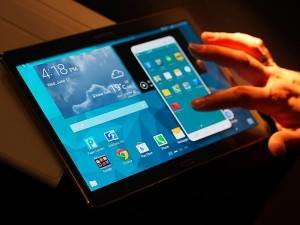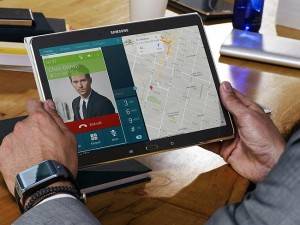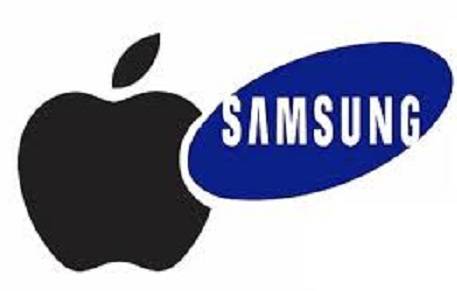Samsung’s Move into Apple’s Home Turf
The latest consumer electronics manufacturer to follow the store-within-a-store trend is Samsung, which announced Thursday that Best Buy will dedicate space within its U.S. showrooms and specialty stores for the Samsung Experience Shop, an area dedicated to the company’s products and demonstrations.
Apple has long had dedicated space reserved in Best Buy, staffed by its own employees, who are ready to answer questions and extol the virtues of Apple technology. With the current deal on the table, Samsung hopes to compete head to head with Apple mini-stores at Best Buy, having their versions of these retail outlets also manned by their own employees to showcase the unique features of their technology, which stand apart from that available in Apple products.
It is a bold move, requiring hefty investment – but Samsung believes it will pay dividends. Apple has cause to be concerned. With a 53% market share of the smartphone market in the US, and having made no eye-catching improvements since iphone 4, Apple has a lot at stake to defend against its main competitor, which is still making a name for itself in North America.
Best Buy will rollout the Samsung Experience Shop in more than 1,400 Best Buy and Best Buy Mobile stores. The retailer will begin with 500 stores on Monday, with approximately 900 more opening up by early May. The rest of the Samsung shops will be open by early summer.
While sizes may vary, Best Buy is carving out as much as 460 feet for Samsung in the largest locations. The shops will highlight Samsung’s full range of mobile products such as smartphones, tablets, laptops, connected cameras and accessories.
Apple has a similar dedicated space at Best Buy stores. The Samsung Experience Shop is different in that both Samsung Experience Consultants and Best Buy blue-shirt sales associates will staff it.
Samsung says its goal is to offer customers a full end-to-end experience so they can explore, purchase, activate and service their Samsung mobile device in one location. Samsung Smart Service will help consumers get set up on their mobile devices; transfer contacts, photos and other content from their old device; and provide ongoing support throughout the product’s lifecycle.
The Samsung Experience Shop is not a new concept for the company; it used to operate an Experience store in the Shops at Columbus Circle at Time Warner Center in New York City. That standalone store, however, didn’t sell anything. Samsung used the outlet to showcase its full range of products from smartphones and tablets to TVs and even appliances.
Touch and Play
“The experience factor is key to helping people learn technology interfaces. They learn by watching how others use the products, and if they can experience the feel of them in their own hands, it enhances the experience far more than if say, they watch a review online” says T.N. Roy, Principal, Technology Advisory Practice at Global Trade Advisory Group (gbltrade.ca). “Samsung’s move to train product specialists to demo their products inside of Best Buy is a significant decision to bring about a re-branding of their product lines in the North American market where they still have substantial gains ahead.”
The Experience Consultants can demonstrate product features, and potentially add to sales by demonstrating the connectivity of each product.
Best Buy Also Banking on the New Deal
Samsung and Best Buy did not disclose any financial details involved in the deal. However, Best Buy is facing its own business challenges, particulary with the consumer practice of “showrooming,” where they visit a store to handle products, then buy them somewhere else online.
“It’s a smart move if Samsung and Best Buy can generate enough foot traffic to the new Experience Shops,” says Roy.
Other Analysts such as Malcom D. Mackenzie of glbtrade.ca say that the move symbiotic. “People have reduced their purchases at retails stores as deals can be found online. Best Buy must feel that the foot traffic generated by a new Experience Shop or mini-outlet will cause people to close the deal at the store itself, instead of what we’re seeing as an increasing trend: consumers conducting reconnaissance at a store and then buying online because they can either get a better deal or customize the product to their satisfaction.”
The retailer and the mobile goods manufacturer will have to position the Shops well, and aggressively market them, to make a difference.
Related:
Samsung Galaxy Tab S tablet sets sights on Apple iPads with lower prices, more powerful technology

SAMSUNG is about to take the battle to Apple head-on, confirming its first range of premium tablets will match or undercut the iPad on price when it arrives in Australia later this month.
The South Korean technology giant, and Apple’s fiercest competitor, will release its potential iPad-killers in Australian stores on July 14 with strikingly similar prices to the leading tablet maker.
Of Samsung’s six Galaxy Tab S tablet models, four match the price of corresponding iPads, one undercuts its Apple competitor by $19, and another costs just $1 more.
The largely matching prices come even though Samsung’s tablets are thinner, lighter, more powerful and offer larger screens with greater resolution than Apple’s current range, although technology experts warn winning over Apple users may not be simple.
Samsung product marketing director Jenny Goodridge said the Tab S range was designed to appeal to technology-loving consumers who wanted a high-end Google tablet — something Samsung had yet to deliver.
“What’s been missing for Samsung has been a tablet that really matches the experience that Australians are getting from our smartphones,” Ms Goodridge said.
“The Galaxy Tab S will be our flagship tablet and we’re hoping to have the same success we’ve had with the Galaxy S5, which is the number one selling smartphone in Australia.”
The Galaxy Tab S range will include 10.5-inch and 8.4-inch tablets in white and bronze.
The tablets will be just 6.6mm thin — equivalent to “a stack of five credit cards,” will feature eight-megapixel cameras, Super AMOLED screens with a higher resolution than that of an iPad’s Retina screen, and bodies weighing less than their Apple equivalents at 465g and 294g respectively.
The Tab S tablets will also offer new software letting users take phone calls, send SMS messages, and control Samsung smartphones from larger screens.

Telsyte managing director Foad Fadaghi said Samsung’s Apple-matching prices were far from accidental given its prices closely matched Apple’s US pricing too.
He said Samsung’s prices, plus its existing popularity in Australia, gave it an opportunity to seriously challenge the market leader.
“One of the big strengths for Samsung is that it has a large base of Galaxy smartphone users,” he said. “Just like with the iPhone, Samsung phone users are more likely to look at Samsung products and tablets.”
But despite similar prices, Mr Fadaghi said Samsung could face a tough battle convincing Apple users to swap their metal-backed tablets for “a plastic one,” and convincing Google Android buyers to buy a high-end rather than budget tablet.
“To come into the market with a premium tablet is a bit risky, but if any company can do it, it’s Samsung,” Mr Fadaghi said.
Google Android tablets now dominate the tablet market, with 120 million sales last year, according to Gartner, compared to Apple’s 70 million.
Apple retained its title of top tablet seller, however, with a 36 per cent share of the market compared to Samsung’s 19 per cent.
—
TABLET PRICES
Apple iPad Mini with Retina Screen vs. Samsung Galaxy Tab S 8.4
Wi-Fi 16GB: Apple $479 vs. Samsung $479
Wi-Fi 32GB: Apple $598 vs. Samsung $579
4G 16GB: Apple $629 vs. Samsung $629
Apple iPad Air vs. Samsung Galaxy Tab S 10.5
Wi-Fi 16GB: Apple $598 vs. Samsung $599
Wi-Fi 32GB: Apple $699 vs. Samsung $699
4G 16GB: Apple $749 vs. Samsung $749
Originally published as Samsung’s tablet could kill iPad
 The Global Calcuttan Magazine
The Global Calcuttan Magazine 